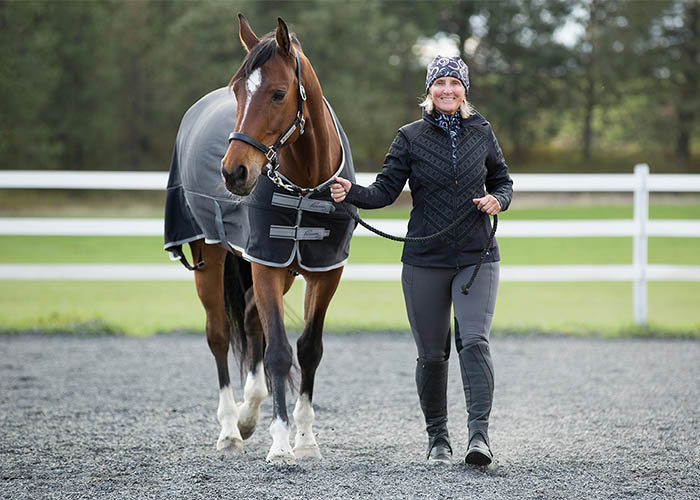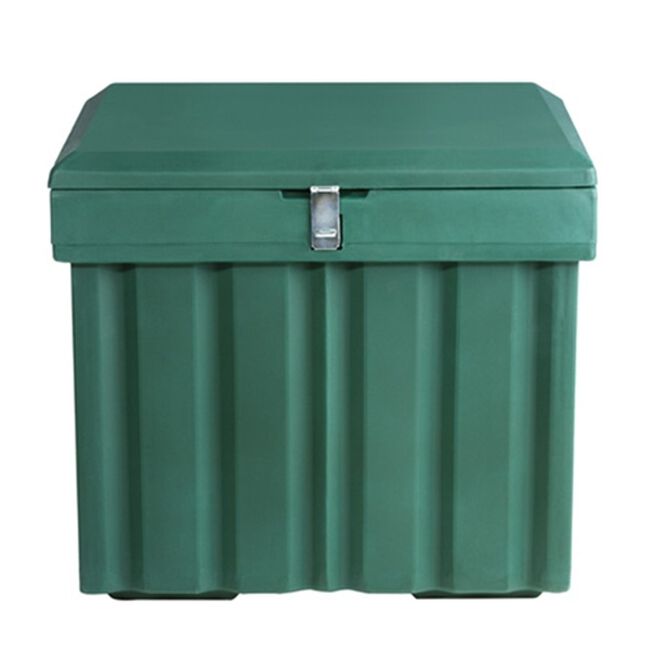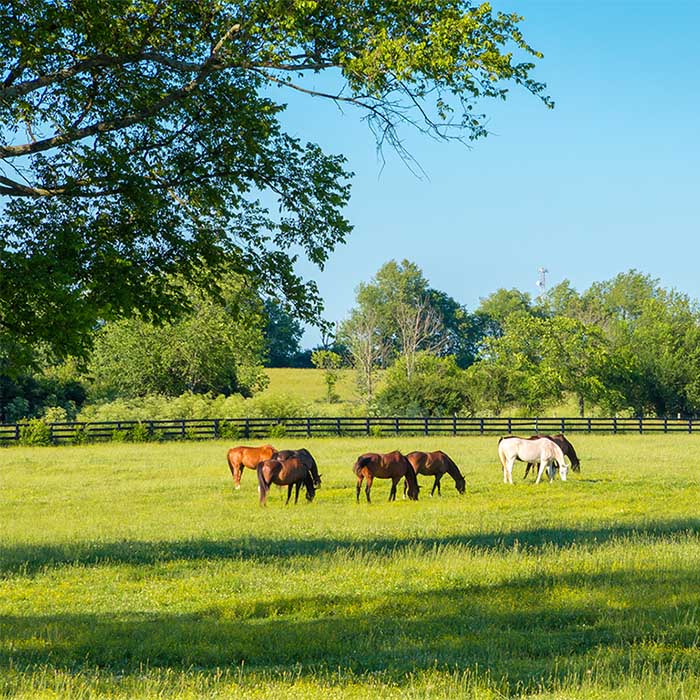
For many horse lovers, purchasing a horse is a lifelong dream. And, with equine enthusiasts moving to more rural areas in response to the pandemic, this dream is becoming a reality for many! Purchasing your first horse is an exciting time in your life, however, it is important to be armed with the right information before you make the jump into horse ownership. Keep reading to learn more about what you need to have in place before bringing them home to live with you.
Buying a horse is a big commitment and a serious one. In addition to dedicating a considerable amount of your time to your horse and to barn chores, it is also a significant financial commitment. The purchase price of the horse is only the tip of the iceberg, with many ongoing expenses occurring including veterinarian care, farrier services, hay, bedding, and tack (riding equipment).
Home Sweet Home

Before you even begin looking for your new equine companion, it is essential that you have a safe and appropriate place to keep your horse. Your horse will need some type of shelter, such as a barn or run-in shed, as well as a turnout area. The shelter can be quite basic, its main purpose is to protect your horse from the elements, while also having adequate ventilation. Horses who are kept in areas without enough ventilation can quickly develop respiratory issues.
“Any barn or shelter should be built to withstand and anticipate horses pushing on, itching on, and kicking,” Dr. Jessica Werner of Vermont/New Hampshire Vet Clinic in East Dummerston, VT, says. “Any sharp objects, any nails sticking out of boards, and any loose construction materials should be removed. The footing (ground) should be well-drained to prevent mud and standing water and there should be no holes in the ground that horses could step in.”
When deciding about what type of barn to build for your new horse, you will want to consider your goals with your horse. “Are they going to be clipped during the winter? Will you ride/work your horse in the cold?” Dr. Werner asks. “If so, it may be more important to have a warm space and/or good blankets for after work. If they are turned out and have a thick wooly coat? Then they will likely be quite comfortable in a run-in shed.”
Generally speaking, stalls in a barn should be a minimum of 10’X10’, and a run-in shed (for one horse) should be 10’X12’. Because horses are herd animals by nature, it is advisable to plan to have at least two horses (or a buddy such as a pony or a goat). In most instances, horses are more comfortable and less lonely when they are able to share their lives with another horse; in fact, horses who live alone can become depressed or withdrawn. When building your shelter, it is a good idea to think about this and plan for the future. This may mean having more than one stall in your barn or building a run-in shed that measures at least 12’X16’ (the recommended minimum size for two horses).
Your horse’s stall or run-in will need to have adequate footing and be cleaned frequently. Depending on your setup a dirt floor may be appropriate (concrete is dangerous and slippery when wet), but many equestrians find that rubber mats over a layer of gravel or concrete keep their horse comfortable and are also easier to clean. You will want to cover your flooring with a layer of bedding to absorb urine — shavings and sawdust are the most popular options, however, you can also utilize shredded newspaper, peat moss, or straw. If you have a concrete aisle in the barn, you will want to cover the aisle with rubber mats so it will not be slippery when wet.
You may choose to build your own barn or go with a barn building company. Construction companies who have equine experience can be extremely helpful in planning out the layout of your barn. If you choose to build the barn yourself, we recommend visiting a number of different backyard barns to get an idea of what configurations would work best for you. Be sure to ask questions of the various barn owners to see what they like about their setup and what they think could be improved upon. Many horse owners find that stalls that open directly into the pasture are convenient and allow the horse access to their shelter when they are turned out.
Feed and Tack Storage
You will also need an additional area to store feed as well as tack and equipment, this will make your life much easier down the road. It is extremely important that the feed area is separate from the horses and that your horses are not able to access the grain, even if they get loose. Horses that eat too much grain at one time can develop a stomach ache (known as colic) because horses are not able to vomit. Colic can be fatal in horses.
Horses are not the only ones that you will want to keep away from the feed. Pests, such as mice and chipmunks, also find the grain to be enticing… they can also carry potentially harmful diseases. Consider storing your grain in an air-tight container, like a galvanized steel garbage bin or the Horsemen’s Pride Feed Bin, which will prevent the feed from getting wet and molding (also a colic concern) while keeping it away from rodents.

Horsemen’s Pride Feed Bin
This sturdy, water and rodent-resistant polyethylene feed storage bin has two separate compartments inside.
Storing your hay requires an additional set of considerations. Hay needs to stay dry at all times because moldy and mildewy hay is not safe for equine consumption. Some equestrians manage this in a hayloft, while other equine professionals recommend keeping hay in a separate structure, such as a shed, because under some circumstances it can also be a fire concern. Hay should not be kept on a dirt or concrete floor, instead, utilize pallets to lift the bales off of the floor and maintain airflow. If you have a moist environment, you can put a tarp under the pallet to protect against moisture.
You will also want to keep your tack and equipment off the floor of your tack room. This is because it is a long-term investment and can easily mold, which will degrade the integrity of the leather. We carry a number of products, such as bridle racks and saddle racks, which will keep your tack safely and securely stored.
Water
Horses require a large amount of clean, fresh water, with the average horse drinking between five and ten gallons per day. You will also need water for chores like washing buckets, bathing your horse, and cold-hosing sore legs. In order to make this easy on you, it is recommended that you install a water line directly to the barn. This is not an item to skimp on. Believe us, you will quickly tire of lugging buckets from your house. Every horse facility, no matter how small, should be equipped with running water.
A frost-free hydrant is important if you live in an area like New England where you typically see bouts of sub-freezing temperatures in the winter months. In the colder months, you will also need to have insulated buckets or bucket deicers to ensure that your horse’s water does not freeze or get too cold. If you choose to use deicers (a must in larger stock tanks), you will need to have electricity run to the barn. Long extension cords are not recommended, so place GFI-rated plugs accordingly when building your barn. Horses will not drink water that is overtly cold, which may lead to dehydration. Dehydration is extremely serious in horses and can lead to a loss of appetite, lethargy, digestive problems, colic, and even death.
Fencing and Pasture Areas

In addition to shelter, your new family member will also need a paddock or pasture area to roam and graze. “Ideally, fencing should be very visible and sturdy,” Dr. Werner explains. “Fencing types like barbed wire should be removed and replaced with horse-safe fencing.” There are a number of different fencing types on the market, including wooden fencing and electric fencing. You can learn more about the various types of fencing and their applications on our blog post, Choosing Between Temporary & Permanent Fencing. Be sure, if you live in an area with harsh winters, that you plan on snow fall and build your fencing accordingly; fences should be at least two feet higher than necessary in these locations to take the impending snow into consideration.
Ideally, the pasture will be in a relatively flat area, as hills can become dangerous to traverse, especially in snowy, icy weather or muddy conditions. You will also want to think about drainage options, as horses who are forced to stand in wet conditions can pull shoes or develop fungal infections in their hooves or legs such as thrush or scratches.
The pasture should also be free from any poisonous plants or trees, such as red maple trees, black walnut trees, and bracken ferns. You can learn more about toxic plants and trees on our blog posts, Dangers from Above: Learn About Toxic Trees and Plants Toxic to Horses in the Northeast. Horses have evolved as grazing animals, so they enjoy having grass to consume, however, this is not necessary as long as you provide them with adequate forage. If your paddock does not have any grass, it is known as a “dry lot.”
It is also important to consider how you will use your paddocks. Will your horses spend all day in the paddocks? Horses love to be outside and stretch their legs, so this is often the best option for their mental and physical health. However, if you will not be home to monitor them during their turnout time, it is essential that they are able to find shelter from the blazing sun or cold rain and snow while they are turned out. Some equestrians accomplish this by putting a run-in shed in each pasture, while others attach the turnout directly to the barn with stall doors that lead directly outside. There are a number of ways to accomplish this, but it is essential that each paddock or pasture has protection from the elements if you are not able to monitor their well-being at each moment of being outside.
When planning your fencing and shelter, it is essential to make a plan for manure management as well. Many horse owners create a manure pile, while others arrange to have it picked up and composted by a third party. What you choose to do with your manure will depend on your space and your neighborhood. “Manure control is important to reduce both flies and parasites. You can control manure by picking pastures, rotating pastures, or dragging to break up manure clumps,” Dr. Werner tells us. “Controlling manure in pastures helps to decrease how many parasites your horse has. Flies can also be reduced with several strategies including fly predators, fly traps/tapes, fly sprays, and moving manure piles farther from barns.” Check out the book Managing Manure: How to Store, Compost, and Use Organic Livestock Wastes to learn more about appropriate manure management.
Equipment
Once you have the larger structures in place, you will want to shop for the proper barn supplies and equipment. In the barn, you will need feed tubs and water buckets for each horse in your care. Flatback buckets are popular options because they hang nicely against the stall walls, however, there are a number of different options. It is simply a question of finding the feeders and buckets that fit the needs of you and your horse. Depending on the footing in your barn or shed, you may also want a hay feeder or a hay bag; these keep the hay lifted off the floor. Horses should never eat directly from a dirt floor because they may ingest small amounts of dirt, which, over time, could lead to sand colic.

In the pasture, you will need a larger water tub to keep your horse hydrated when they are turned out. In the winter months, a heated bucket or bucket de-icer will be necessary to prevent the water from freezing. Hay feeders will keep the hay clean and dry, preventing the horses from walking all over the hay and grinding it into the ground. Hay feeders also limit the amount of hay wastage that occurs.
For cleaning stalls, you will need a pitchfork and a muck bucket, however, you may find that a wheelbarrow is indispensable for barn chores. Additionally, stable shovels make “stripping stalls” (removing all the bedding and manure from the stall) a quick and easy task.
In order to groom your horse, you will need a way to tie them. Many equestrians like cross-ties, which are two ties that are connected to facing walls. They clip directly to your horse’s halter and help to keep them secured.
After creating your equine facilities, maintenance is key. “It is easier to prevent injuries by keeping up your barn and fencing than to deal with the potential injuries after. Prevention is the key with horses. It is good to walk your pasture to try and find anything your horse could injure itself on and remove it, fill in holes, have good footing, etc.” Dr. Werner concludes.
After you have built a suitable facility for your horse, the fun can begin — looking for the new member of your family! In our next blog post, Purchasing Your First Horse, we tackle how to go about shopping for your first horse and what you should keep in mind.
At The Cheshire Horse, we love talking with first-time horse owners! If you have any questions regarding the appropriate barn, fencing, or stable equipment for your setup, we encourage you to contact a member of our friendly and knowledgeable sales staff. We look forward to speaking with you and helping you with your horse ownership journey.
Barn Equipment Checklist
- Muck Bucket
- Wheelbarrow
- Pitchfork
- Shovel
- Rake
- Rubber Stall Mats
- Water Buckets
- Feed Buckets
- Bucket Hardware
- Outdoor Water Tanks
- Tank Deicer
- Indoor Insulated or Heated Water Buckets
- Flashlight
- Hose
- Grain Storage
- Grain Scoops
- Cross Ties and Hardware
- Halter Hooks
- Saddle Racks
- Bridle Racks
- Blanket Racks (if blanketing)
- Spare Halter and Lead Ropes
- Salt Block Holders
- Hay Feeders (if using)
- First Aid Kit
- Spare Fencing Supplies (extra posts, insulators, etc.)
- Stall Deodorizer (if using)
- Basic Toolbox
- Mounting Block
